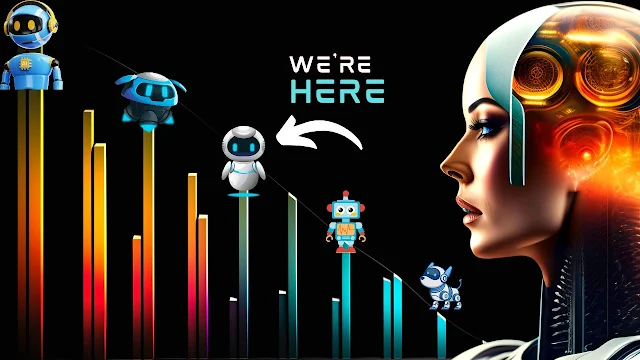
Phase One: Pre-programmed Robots
In the early days of Robotics, before the advent of sophisticated artificial intelligence systems, pre-programmed robots were the pioneers. These machines were precisely coded and configured to execute specific tasks. They were highly specialized and designed for repetitive and predictable tasks in controlled environments such as manufacturing assembly lines. While they lacked adaptability, pre-programmed robots played a vital role in industries where precision and consistency were paramount.
Phase Two: Reactive Machines
The evolution of Robotics took a significant stride forward with the emergence of reactive machines. These robots possessed a degree of environmental awareness and the ability to react to specific stimuli. Reactive machines could perceive their surroundings in real time, which served as the foundation for decision making. Although their responses were rule-based and predetermined, reactive machines marked a notable advancement in robotics by exhibiting traits associated with intelligent behavior.
Phase Three: Tele-operated Robotics
Tele-operated robotics introduced remote control and human-machine collaboration. These semi-autonomous machines were controlled by human operators from a safe distance using a wireless network. Tele-operated robots worked in areas where it was challenging or unsafe for humans to be physically present. Examples include robots used for planetary exploration, robotic surgical systems, and teleoperated drones in military contexts. While teleoperated robots extended human capabilities, they still relied on human guidance.
Phase Four: Autonomous Robots
The advent of autonomous robots represented a watershed moment in the field of Robotics. These machines could operate independently, making decisions based on their own sensory inputs and internal algorithms. Autonomous robots relied on advanced technologies such as artificial intelligence and machine learning to navigate and interact with their environments. Examples include autonomous delivery robots and robotic vacuum cleaners. While still evolving, autonomous robots have the potential to revolutionize industries, improve efficiency, and enhance safety.
Phase Five: Humanoid Robots
Humanoid robots are machines designed to mimic human form and capabilities. Equipped with sensors and natural language processing capabilities, humanoid robots can perceive their surroundings, interact with humans and objects, and perform tasks with a level of mobility and dexterity that resembles human movement. These robots have a wide range of applications, from healthcare to entertainment. Notable examples include robots used in retail environments and social interaction, such as Pepper and Sophia.
Phase Six: Augmenting Robots
Augmenting robots, also known as virtual robots or robots for human augmentation, enhance human capabilities rather than replace humans. These robots have the power to elevate human strengths and restore abilities that may have been lost. Examples include robotic prosthetic limbs and exoskeletons. Augmenting robots blur the boundaries between human potential and technological innovation, promising to reshape our understanding of human capabilities and propel humanity to new heights.
If you've made it this far, comment down below with the word "100" to confirm that you've received the knowledge from this blog. For more interesting topics, make sure you watch the recommended video that you see on the screen right now. Thank you for reading!





.jpg)


0 Comments